NOTES
Tuesday, July 3, 2007
CORRECTION: In my previous notes I used the incorrect nomenclature for blue and black. I’m going to correct the mistake in the “List of Birds” section on the left; however, I cannot edit a posted blog. From now on, I will be using the correct nomenclature.
b = black (formerly bl = black)
lb = light blue (formerly b = blue)
07:15-08:30
High fog, warm, still
Birds Sighted In Order of Arrival:
1. mwlblb male
2. morlb male
3. mrgo male
4. banded juve
5. unbanded juve
6. mwrg male
7. rrmo molting, defined breast
8. unbanded with leg mites
9. lbpmp female
10. mlbob female
11. mpbw female
12. unbanded with burnt-orange bill feathers and swollen, pink elbows
13. unbanded shopper male
COMMENTS:
This morning, I noticed the males in the family came first to the feeder and were followed by the females. Morlb, the newest bird to the feeder, came to and from the east, doing his best to clear out peanuts quickly. No time spent shopping, he swooped in, grabbed one peanut, cached it beyond the eastern border of the driveway, then returned to repeat the procedure in a mad, flurry of greed. This bird has a history that includes visits to the Kokotat and Jeff Jacobsen feeders, along with his mate, mpbw, who appeared for the first time yesterday as well. He has burnished feathers around his right eye and above his bill (loral and supraloral region) that appear orangey-red, a color you might associate with age, or sun bleach. Jeff J. suspects age. The bird’s behavior is foreign; unlike those members of the more familiar group, who linger, choose seed sometimes, peanuts others; take time to crack a nut in a tree and eat it before gathering several, and flying off to cache. Is this reflective of a cultural difference, personality difference, or simply, newness to this place?
Rrwo is back today. Her disheveled appearance is even more distinct now—feathers are rumpled, crisscrossed, springing out from her body in an unruly arrangement that lacks all sense of order. Though small, she looks buxom, rounded breasts forming a gentle line of cleavage down her center. I wonder; is this a seasonal change, an adaptation to nesting that I haven’t noticed before; or a quality unique to this bird? I will watch to see if I notice this attribute in other females.
A new unbanded bird arrived today. He was accompanied by an unbanded juvenile and had the same burnt-orange feathers as morlb, except directly above the upper mandible. He was accompanied by an unbanded juvenile and chased by Mr. Go, who called, “chooka, chooka, chooka, chook.”
b = black (formerly bl = black)
lb = light blue (formerly b = blue)
07:15-08:30
High fog, warm, still
Birds Sighted In Order of Arrival:
1. mwlblb male
2. morlb male
3. mrgo male
4. banded juve
5. unbanded juve
6. mwrg male
7. rrmo molting, defined breast
8. unbanded with leg mites
9. lbpmp female
10. mlbob female
11. mpbw female
12. unbanded with burnt-orange bill feathers and swollen, pink elbows
13. unbanded shopper male
COMMENTS:
This morning, I noticed the males in the family came first to the feeder and were followed by the females. Morlb, the newest bird to the feeder, came to and from the east, doing his best to clear out peanuts quickly. No time spent shopping, he swooped in, grabbed one peanut, cached it beyond the eastern border of the driveway, then returned to repeat the procedure in a mad, flurry of greed. This bird has a history that includes visits to the Kokotat and Jeff Jacobsen feeders, along with his mate, mpbw, who appeared for the first time yesterday as well. He has burnished feathers around his right eye and above his bill (loral and supraloral region) that appear orangey-red, a color you might associate with age, or sun bleach. Jeff J. suspects age. The bird’s behavior is foreign; unlike those members of the more familiar group, who linger, choose seed sometimes, peanuts others; take time to crack a nut in a tree and eat it before gathering several, and flying off to cache. Is this reflective of a cultural difference, personality difference, or simply, newness to this place?
Rrwo is back today. Her disheveled appearance is even more distinct now—feathers are rumpled, crisscrossed, springing out from her body in an unruly arrangement that lacks all sense of order. Though small, she looks buxom, rounded breasts forming a gentle line of cleavage down her center. I wonder; is this a seasonal change, an adaptation to nesting that I haven’t noticed before; or a quality unique to this bird? I will watch to see if I notice this attribute in other females.
A new unbanded bird arrived today. He was accompanied by an unbanded juvenile and had the same burnt-orange feathers as morlb, except directly above the upper mandible. He was accompanied by an unbanded juvenile and chased by Mr. Go, who called, “chooka, chooka, chooka, chook.”
Subscribe to:
Post Comments (Atom)
Pia Sets the Trap
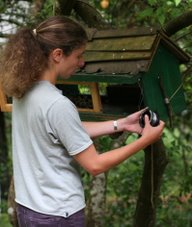
07/24/07
Peaking...
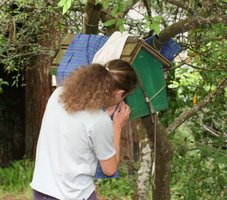
07/24/07
Oops, wrong bird!
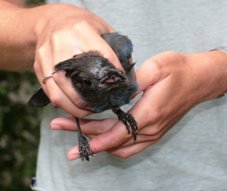
Demonstrating the "hold"
Try Again
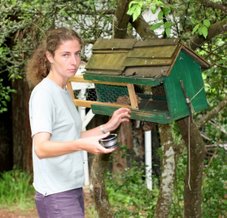
Bird in the Bag
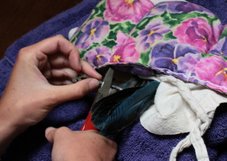
Applying a metal band
Measuring

and more measuring. . . .
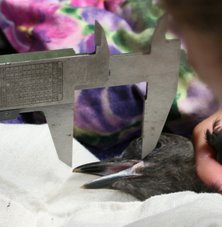
Blood Sampling
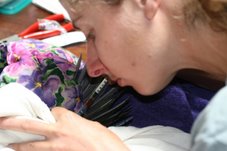
Jeff J's Work

Pia's test tube holder
Weighing
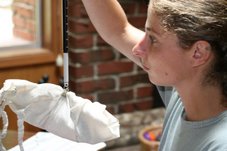
And then....release
When the sun goes down...
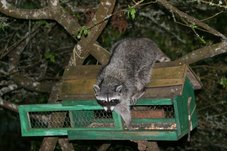
Steller's Jay Taxonomy/Description
Common Name: Steller's Jay
Class: Aves
Order: Passeriformes
Family: Corvidae
Genus: Cyanocitta
Species: Cyanocitta stelleri
Steller’s jay belongs to the family, Corvidae, in the Avian Order Passeriformes. Passeriformes is the order of perching birds. Corvidae is the jay, magpie and crow family. The Steller's jay's scientific name is Cyanocitta stelleri. The generic name, cyanocitta, means "blue jay". Its specific name, stelleri, named for George W. Steller (1709-1746). Steller was a German zoologist who explored the coastal areas of the northern Pacific Ocean in 1740.
Band Colors
black | white | purple | red | orangeBands are read in the following order:
light blue and light blue | green
Note: Light blue is difficult to read. It darkens with age, resembling a green band. (b/w/p/r/o/lb/g)
right bottom band
right top band
left bottom band
left top band
Data Collecting
This information was copied from the website of Dr. Jeff Black, Humboldt State University Wildlife Department.
The data to include for each record:
- Bird’s color code
- Size of social group seen at the same time
- Associates’ color codes (or if unbanded = UNB; or not determined = NOTD)
- Number of times associates came within 3 meters of each other
- Approximate time spent within 3 meter distance (e.g. 2 seconds, 15 sec, etc.)
- Total time you watched the birds (e.g. 5 minutes, 10 min, etc.)
- Time of day; start of observation (e.g. 1935)
- Date (e.g. 9.30.99)
- Location of observation (e.g. Rewood Bowl SW corner west bleachers. And state whether the bird was seen at a birdfeeder or in trees, etc)
- Comments (e.g. deformed leg, feather tuft on back, etc.)
Arcata Steller's Jay Sightings
Mr. Go
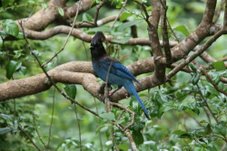
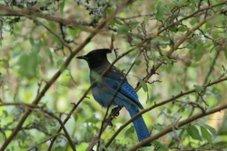
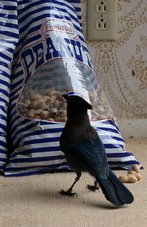
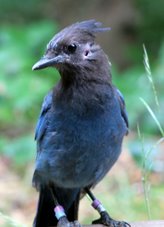
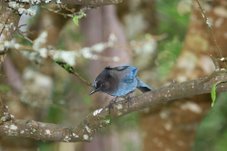
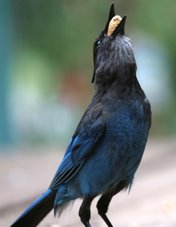
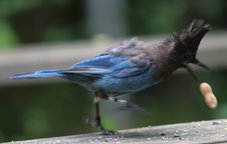
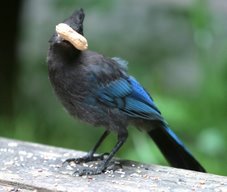
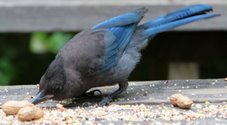
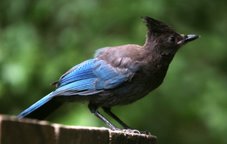
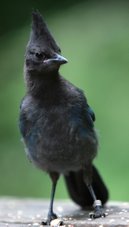

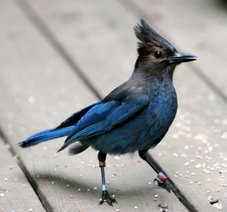
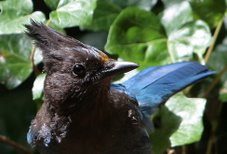
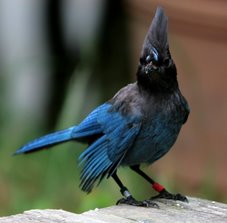
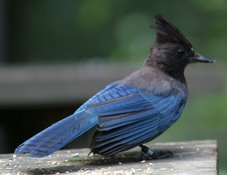
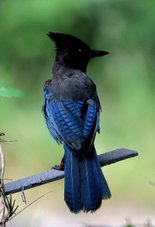
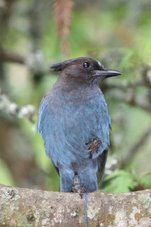
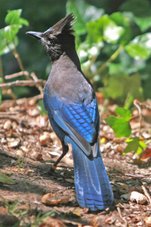
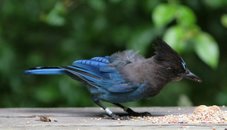
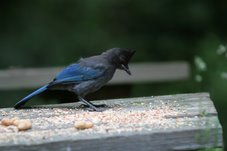
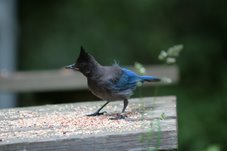
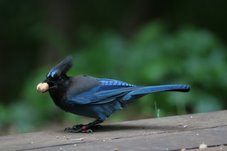
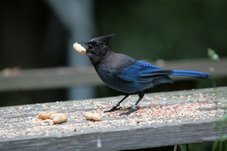
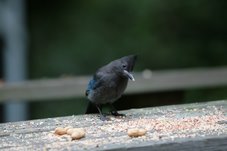
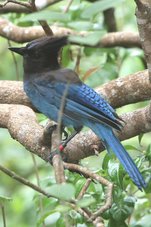
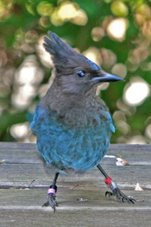
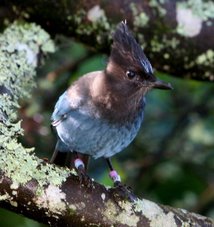
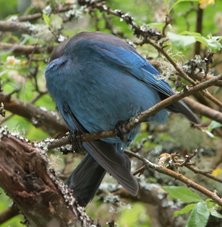
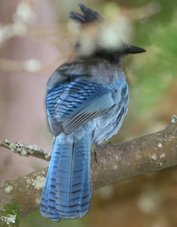
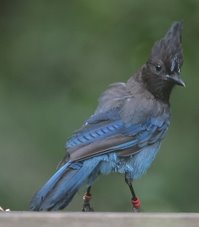
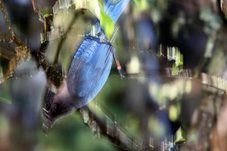
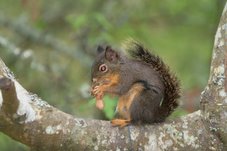
No comments:
Post a Comment